Estadio de La Cartuja: Spain
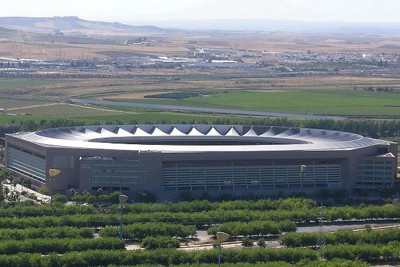
Discober92 (= Alberto Martín), CC BY-SA 3.0, via Wikimedia Commons
Officially known as Estadio La Cartuja de Sevilla but often referred to simply as La Cartuja, this multi-purpose venue opened its doors for the first time in May of 1999. Situated in the Isla de la Cartuja in Seville, it is part-owned by Real Betis, Sevilla FC and the Spanish Government, though no club uses it on a permanent basis. It was originally designed as the host venue for the World Championships in Athletics and has the ability to host 60,000 supporters.
The second-largest stadium in Andalusia and the sixth-largest in all of Spain, it has a history of being used for important football matches. It was, for example, the venue used for the UEFA Cup final between Celtic and Porto in 2003, as well as the Copa del Rey final. It was one of the stadiums included in the bid when Seville put forward plans to host the Summer Olympics in 2004 and then again in 2008. It has also hosted the Davis Cup tennis tournament.
Stats
| Estadio de La Cartuja Stats | |
|---|---|
| Year Opened | 1999 |
| Capacity | 60000 |
| Record Attendance | 52972 (Celtic v Porto (21/05/2003)) |
| Pitch Size | 105 x 68 (7140) |
| Owner | Regional Government of Andalusia (40%) , Spanish Government (25%) , Seville City Council (19%) , Seville Congress of Deputies (13%) , Real Betis (1.5%), Sevilla FC (1.5%) |
| Clubs Hosted | Spain national football team |
| First Fixture | Spain v Croatia (05/05/1999) |
Estadio de La Cartuja Photos
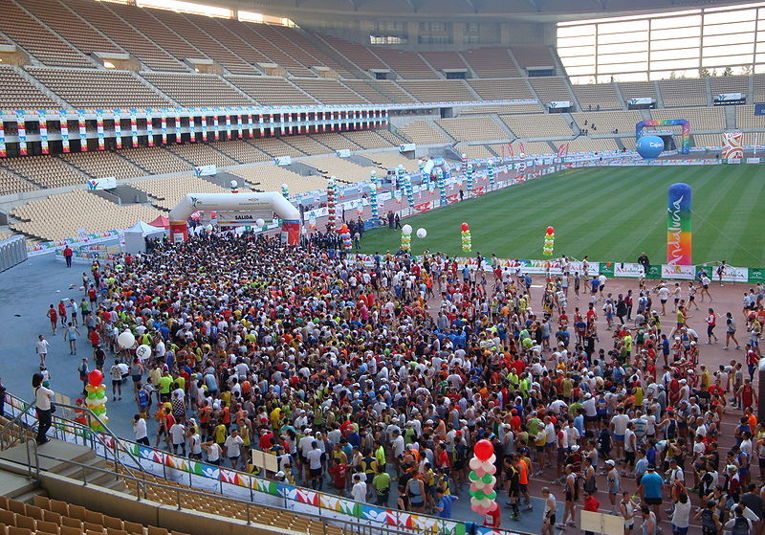
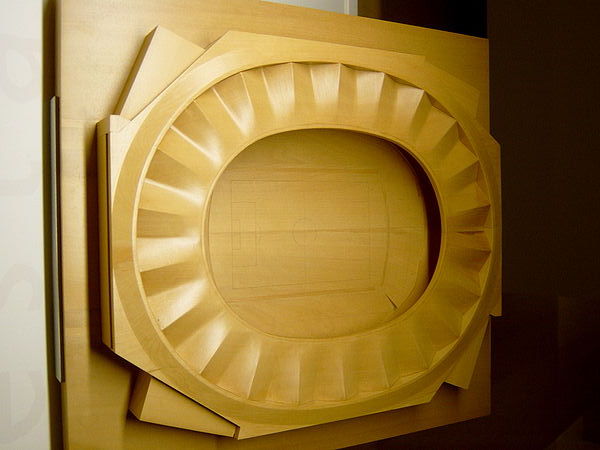
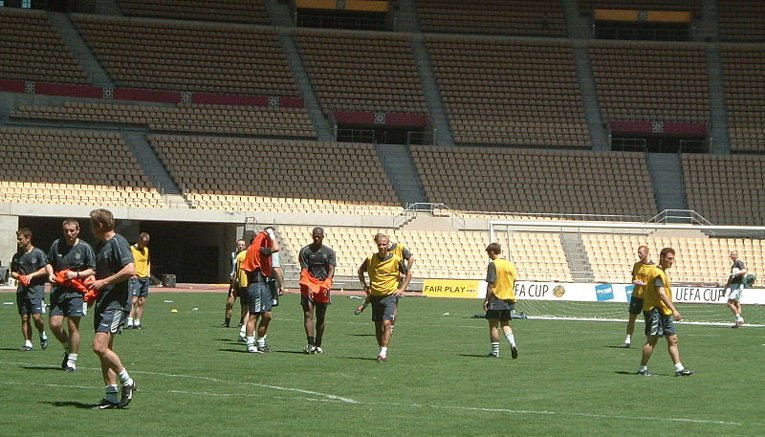
Estadio de La Cartuja Seating Plan and Where to Sit
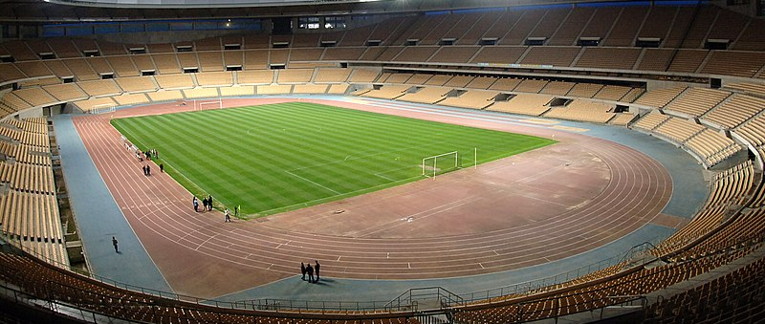
Built in a bowl design of continuous seating, Estadio de La Cartuja has three levels, though there’s little to differentiate the bottom and middle levels. The upper level is separate from the other two by hospitality boxes around most of the ground. The upper level is also noticeable for its more steep aspect than the other levels. There is a running track that keeps the pitch a distance away from the stands, though the venue still provides a good atmosphere for matches.
Getting To Estadio de La Cartuja
Train – Estadio de La Cartuja is located about 3.5 kilometres from the centre of Seville. You’ll find it in the north-west part of the city, so the best way to get there is to take a C2 line train from the Santa Justa Station and disembark at Estadio Olimpico, which is right next to the ground. That takes about 15 minutes, though you should be aware that services are limited on non-match days.
In terms of getting to Seville in the first place, you can expect it to take you about 32 hours from London St. Pancras. Given it’s a journey of over 1,000 miles in distance, that’s not too bad all things considered. There are four changes on the most direct route, taking you to Paris Nord before travelling to Barcelona-Sants and Madrid-Puerta De Atocha.
Bus – There are few public buses that travel to Estadio de La Cartuja, though there might well be private buses travelling on the day or those organised by the city specifically for match-going fans.
Car – The stadium is conveniently located just off the SE20 and SE30, meaning that driving to the ground id actually quite easy.
By Air – Seville Airport is Spain’s busiest inland airport, being as it is the main international airport for Western Andalusia as well as most of southern Spain.It handles more than seven and a half million passengers a year and is located about ten kilometres to the east of Seville’s centre.
Taxi – A taxi from the centre of Seville out to the stadium will take about 20 minutes to complete its journey and should cost you between €10 and €20, depending on traffic.
Parking Near Estadio de La Cartuja
There is quite a lot of barren space around the ground that allows for parking, but make sure to check for restrictions on the day that you’re there.
Useful Resources
Estadio de La Cartuja Hotels

Hilton Garden Inn Sevilla - £60+
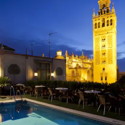
Hotel Doña Maria - £115+
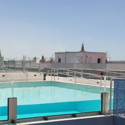
Hotel Macià Sevilla KUBB - £50+
Pubs and Bars Near Estadio de La Cartuja
The Merchant
O'Neill's
The Clan Scottish Pub
Facilities
Having been opened in 1999, it’s fair to say that the facilities inside Estadio de La Cartuja are not as modern as some stadiums in Spain but are more impressive than others. You’re unlikely to be disappointed if you spend time there, let’s put it that way.
Hospitality
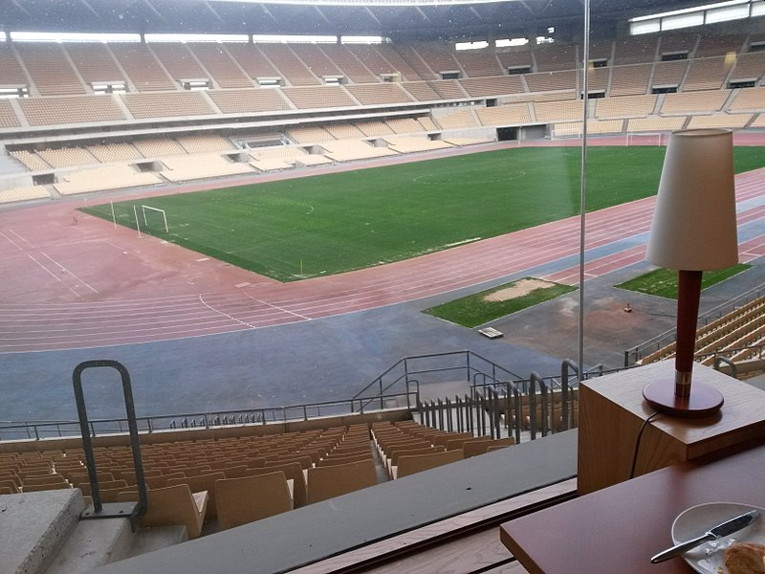
There are a number of executive boxes around the stadium, with many of them helping to separate the lower tiers from the upper one. As you would expect for a relatively modern stadium, these are enjoyable places to spend time in and cater for all levels of guest.
Private Hire
Should you wish to hire the stadium for an event or use the boxes for some reason then the best thing to do is to contact the venue directly.
Stadium Tours & Museum
At the time of writing, there is no tour available for the Estadio de La Cartuja, nor is there a museum on site. The latter fact makes sense, of course, given there is no associated club to show off the history of.
Estadio de La Cartuja History
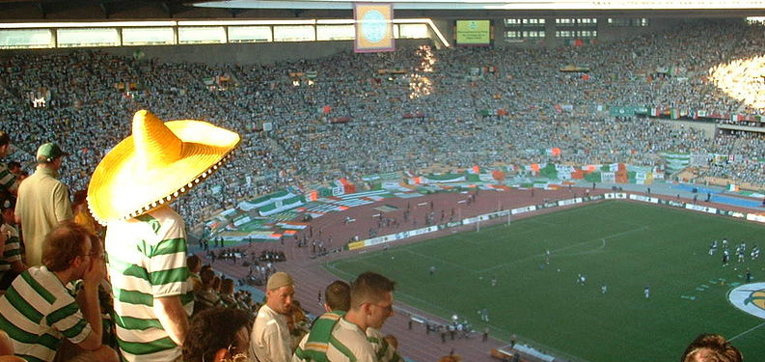
Situated on the Isla de la Cartuja in Seville, La Cartuja was built in order to allow the city to host the World Championships in Athletics in 1999. When the city made a bid to host the Summer Olympics in 2004 and then again in 2008, the stadium was a central part of the bidding process. Indeed, you’ll still find numerous people referring to it as Olympic Stadium in spite of the fact that both bids failed to impress the awarding panel. It enjoyed its inauguration on the fifth of May in 1999 when Spain took on Croatia, winning 3-1. In modern money, it cost more than €120 million to build, yet it has never really found a specific purpose. It has been used to host numerous football matches, from friendly and competitive matches of the Spanish national side and UEFA Cup finals, but nothing permanent.
In recent years, the ground has hosted more music events than football matches, with the likes of Madonna, AC/DC, U2 and Bruce Springsteen all performing in it. Things could have been so different if it had indeed been picked as an Olympic venue but instead both Real Betis and Sevilla have suggested that they might move into it temporarily whilst they renovate their own home grounds in the coming years. Managed by the Sociedad Estadio Olímpico de Sevilla S.A., it had a temporary roof install on it when it hosted the Davis Cup in 2004 and then again in 2011 on behalf of the Royal Spanish Tennis Federation. It has also been chosen by the Spanish Football Federation to host four Copa del Rey finals, suggesting that it might finally have found a genuine use.
Future Developments
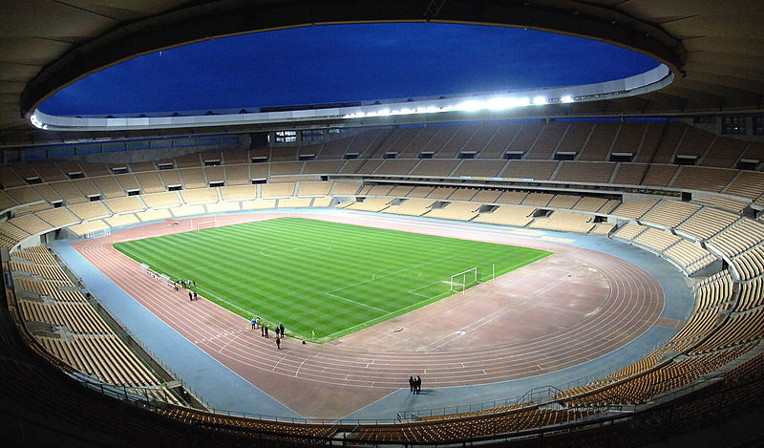
Prior to the world being paused because of the global health crisis, the Andalusian government was taking steps to reactive the stadium as a going concern. This included the likes of laying new turf down as well as fixing the roof, which is part of the reason it was chosen to host several Copa del Rey finals. It is likely that the ground will continue to undergo improvements now that the Andalusian government has remembered it is available to it as a stadium.
